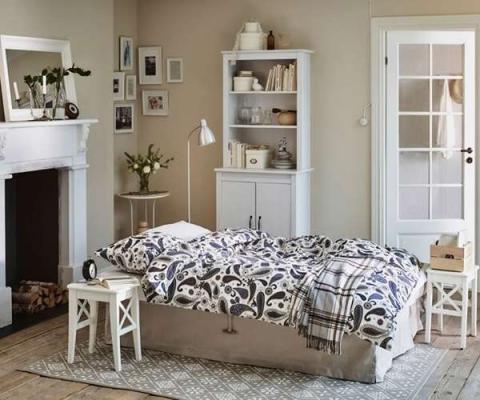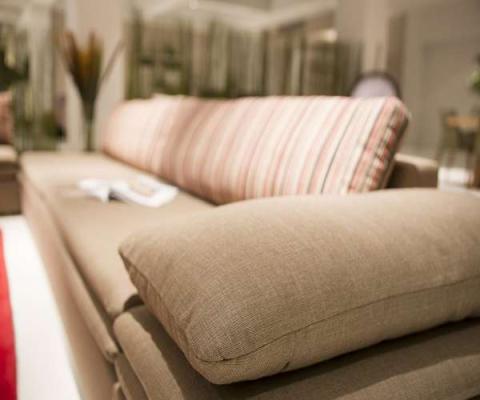A loveseat which is a 2 seater sofa in order to last for a long time has to be well made and comfortable. The life expectancy of different types of sofas varies.
two seater comfortable sofa
Here we want to talk about how big a 2-seater sofa should be and how long can a durable and comfortable sofa last. We will also compare the spring and the webbing in sofas construction. Well, how big should a 2-seater sofa be? A two-seat sofa typically comes in sizes between 66 and 88 inches (168 cm to 224 cm. ) Love seats are often smaller than 2 seat sofas and have two seats as well. The width of the cushions is what sets a two-seat sofa apart from a love seat. It is a loveseat if the two-seater has cushions that are the same size as those often seen on a three-seat sofa (22′′–24′′ or 56 cm–61 cm). A sofa is said to have two seats if the cushions are 27′′ (69 cm) or wider. Love seats and sofas are both two-seaters with cushions that fall within the two dimensions. What separates a sofa from a Loveseat (2-seater sofa)? A loveseat is a 2-seat sofa. In a house with a living room, there are many pieces of furniture, such as sofas and loveseats. This particular piece of furniture is referred to by a wide variety of terms, including sofa, settee, and divan, to name a few. The unskilled eye sees them as being similar. When deciding what to put within one’s home, the smallest details matter to someone who cares about function, comfort, and aesthetics all at once. The sofa and loveseat are designed to accommodate multiple people at once. Both have been around for ages and have developed to be comfortable, as shown by the different types of upholstery used in the creation of these pieces of furniture. Despite the terminological ambiguity, there are distinctions between the two. Of course, the size is the most obvious distinction, but others include their intended uses and individual histories. Below, we talk more about the differences between the couch and the loveseat. What is a sofa? A sofa is a type of upholstered seat that is cushioned and connected with springs, often known as a couch or settee depending based on where the speaker comes from. It has arms and a back that are partially or completely upholstered as well. It has an average length of roughly 84 inches and is made to fit two or more people. A sofa’s primary function is to provide seating, and as such, it can be found not only in homes but also in workplaces, lobbies, and reception rooms, as well as in bars. However, sofas can also be utilized for sleeping due to their length. Additionally, the majority of sofas contain a feature that lets them be converted into beds. What is a comfortable Loveseat (2-seater sofa)? A piece of furniture called a loveseat, courting chair, or mini-sofa is made to fit just two people. Like the sofa, loveseats have upholstery, backs, and arms. The normal backseat is only about sixty inches long and is only made to hold exactly two people. The loveseat’s name suggests that the two people it is intended for are either in a relationship or are courting. The loveseat was initially intended to provide women with a place to sit down and even out their voluminous dresses, which were in style at the time. A little later, when people began to realize that these tiny sofas can accommodate exactly two people courting, these tiny sofas began to be marketed as loveseats. Variants have since been released. One famous variation is the “tete-a-tete,” a two-seater designed in the shape of an S, apparently, so a pair can chat face-to-face while sharing an armrest. 
two seater comfortable sofa bed
The British Two Seater is another variation, which was formerly more aesthetically pleasing but has since changed to become a useful item of furniture for tiny places and is essentially just a sofa for two people. Nowadays, the majority of these couches (which are still marketed as loveseats) are actually mini-sofas made for apartments or to go with larger sofas. What separates a sofa from a comfortable loveseat (2-seater sofa)? Definition Any upholstered sitting piece with a back and armrest that can accommodate two or more persons is referred to as a sofa. A loveseat is a little sofa made just for two people, typically a couple. Number of seats and length A sofa may accommodate several people, frequently three or more. It typically measures 84 inches in length. A loveseat typically has an average length of sixty inches and can only sit up to two people. Main goal The basic function of a couch is to accommodate two or more people comfortably at once. A loveseat is usually used to facilitate private conversations between courting couples. Initial purpose A sofa was first intended to be a cozy chair that could accommodate multiple people. The original purpose of a loveseat was to give the women of that era extra room to smooth down their thick garments. Subsequent usage Due to their length and inherent functionality, the majority of sofas may double as beds. In smaller settings, such as apartments, loveseats can be used as a smaller sofa or as a complement to full-sized sofas. Variants The sofa bed, daybed, futon, chaise longue, divan, and fainting couch are a few sofa variations. The tete-a-tete and the British Two Seater are well-known variations of the loveseat. Various names Loveseats are also known as courting chairs or mini-sofas, whereas sofas are also known as couches or settees. How long does a sofa last? The upholstery, cushions, springs, frame, and level of maintenance you are willing to offer a couch will all affect how long it will last as an investment in your home. In general, the longer you pay for the couch, the longer it will remain in good shape. However, this is not always the case. Additionally, how you handle the newest member of your family matters. A 2- seater sofa Life expectancy on average The ordinary couch should last 10 to 15 years before becoming unusable, although one made with poorer quality may do so sooner. Couches that are used sparingly or seldom may last more than 15 years. Many furniture producers provide ten-year warranties that protect against frame and spring system structural flaws. Find out the length of the manufacturer’s warranty on the parts to evaluate the quality of the couch’s concealed construction. Limited lifetime warranties are provided by the most respected manufacturers of high-quality furniture. Schedule for actual replacement The majority of homeowners repair couches before they collapse or entirely cave in. Every 7 to 10 years, the average person shops for a replacement, though often not because to structural issues. Even if the couch’s frame and suspension are still in good shape, the upholstery may need to be replaced because it is worn out or because the owner prefers a different style. Starting over with a new sofa is more typical than reupholstering old furniture. Longevity is increased by using materials other than basic cotton or silk, such as leather, linen, canvas, or micro suede. Elements of quality  While heavy couches have solid hardwood frames, light couches often have flimsy, wood composite frames. The frame lasts longer than one with nonreinforced joints if the maker screws and glues all the joints. Polyester and polyurethane cushions often endure longer than those filled with down or other feathers. A down-polyester blend is a good substitute. Four-way coil systems droop more quickly than hand-tied, eight-way coil systems after at least ten years. According to the Wyzenbeek fabric test, durable upholstery can withstand 15,000–30,000 rubs before fraying. Avoid buying a sofa with an “X” rating, which often means that the upholstery needs to be brush-cleaned. Instead, check manufacturer code ratings to see how a fabric may be spot-cleaned. Tips for maintenance While you don’t have to handle your couch delicately, it is a good idea to give it some regular maintenance. Remove the cushions from time to time and vacuum any rubbish that has been collected in the crevices; debris can rub the fabric and cause it to prematurely tear. For cleaning advice, check the manufacturer’s instructions because the type of fabric will greatly affect the techniques you use. Utilize a slipcover or maintain the couch out of bright sunlight to prevent fading of the fabric. The application of a stain treatment lengthens durability and enhances the look. Even while jumping on a couch can be enjoyable at times, try to prevent your children or yourself from doing so. Sofas construction: Spring versus webbing Is your ancient couch just about holding on? You undoubtedly pay close attention to details like the fabric type and general design when selecting a new sofa. However, the couch suspension system can significantly affect how comfortable and supported your new sofa feels when you’re sitting on it. You can better grasp what to look for when browsing couches at a furniture store by comparing the spring and webbing suspension. Spring suspension: What Is It? Rows of thick wire that have been bent into S-shaped coils are used in spring-assisted sofas. This suspension technique, known as a sinuous spring structure, uses horizontal metal rods to strengthen the springs. The rods stop the springs from sagging or wallowing. Eight-way, hand-tied springs, which have hourglass-shaped springs, are another type of spring support. Each spring in these coils is hand-knotted with twine in eight different locations.
While heavy couches have solid hardwood frames, light couches often have flimsy, wood composite frames. The frame lasts longer than one with nonreinforced joints if the maker screws and glues all the joints. Polyester and polyurethane cushions often endure longer than those filled with down or other feathers. A down-polyester blend is a good substitute. Four-way coil systems droop more quickly than hand-tied, eight-way coil systems after at least ten years. According to the Wyzenbeek fabric test, durable upholstery can withstand 15,000–30,000 rubs before fraying. Avoid buying a sofa with an “X” rating, which often means that the upholstery needs to be brush-cleaned. Instead, check manufacturer code ratings to see how a fabric may be spot-cleaned. Tips for maintenance While you don’t have to handle your couch delicately, it is a good idea to give it some regular maintenance. Remove the cushions from time to time and vacuum any rubbish that has been collected in the crevices; debris can rub the fabric and cause it to prematurely tear. For cleaning advice, check the manufacturer’s instructions because the type of fabric will greatly affect the techniques you use. Utilize a slipcover or maintain the couch out of bright sunlight to prevent fading of the fabric. The application of a stain treatment lengthens durability and enhances the look. Even while jumping on a couch can be enjoyable at times, try to prevent your children or yourself from doing so. Sofas construction: Spring versus webbing Is your ancient couch just about holding on? You undoubtedly pay close attention to details like the fabric type and general design when selecting a new sofa. However, the couch suspension system can significantly affect how comfortable and supported your new sofa feels when you’re sitting on it. You can better grasp what to look for when browsing couches at a furniture store by comparing the spring and webbing suspension. Spring suspension: What Is It? Rows of thick wire that have been bent into S-shaped coils are used in spring-assisted sofas. This suspension technique, known as a sinuous spring structure, uses horizontal metal rods to strengthen the springs. The rods stop the springs from sagging or wallowing. Eight-way, hand-tied springs, which have hourglass-shaped springs, are another type of spring support. Each spring in these coils is hand-knotted with twine in eight different locations.  Since the time-consuming fabrication process increases the cost, this sort of spring support is typically found in expensive sofas. Webbing suspension: What Is It? Straps made of polypropylene webbing are used in sofa webbing to build the platform that supports the cushions. The webbing typically goes from the front to the back of the sofa, although it can also go from side to side. Use clips or staples to fasten the webbing to the frame. The strength and support you receive from the webbing depend on the webbing’s quality and how securely it is fastened to the frame. If you decide to use this suspension method, choosing a manufacturer who offers a warranty on the webbing might give you peace of mind. General robustness and support Webbing is typically seen as a low-end, less reliable alternative to springs. It can, however, differ greatly based on the webbing used and how securely the manufacturer fastens it to the frame. Webbing of superior quality can offer equal support to spring construction. Modern couches that are low to the ground frequently have webbing since there is less space for springs in those types of sofas. Any form of suspension depends on how well it is built to provide quality and support. A webbing suspension sofa with close-spaced webbing and straps running from back to front and side to side can offer a lot of support. When the S-shaped coils are closely spaced, sinuous spring sofas are of higher quality and offer more support. Different comfort levels When you sit down on a sofa with springs or coils, there is a slight bounce, which may help you feel more at ease. When you’re sitting, webbing doesn’t offer the same flexibility. Listen for creaking when testing out spring couches to ensure that they were built well. Although a spring sofa with constant squeaking may offer more bounce, the sound can get tiresome. Even if you can fix couch springs, it’s best to start with a functional sofa to reduce your anxieties. Summary Upholstered seating pieces like sofas and loveseats are typical in living rooms. Innovation and cultural factors have contributed to the evolution of sofas and loveseats over time.
Since the time-consuming fabrication process increases the cost, this sort of spring support is typically found in expensive sofas. Webbing suspension: What Is It? Straps made of polypropylene webbing are used in sofa webbing to build the platform that supports the cushions. The webbing typically goes from the front to the back of the sofa, although it can also go from side to side. Use clips or staples to fasten the webbing to the frame. The strength and support you receive from the webbing depend on the webbing’s quality and how securely it is fastened to the frame. If you decide to use this suspension method, choosing a manufacturer who offers a warranty on the webbing might give you peace of mind. General robustness and support Webbing is typically seen as a low-end, less reliable alternative to springs. It can, however, differ greatly based on the webbing used and how securely the manufacturer fastens it to the frame. Webbing of superior quality can offer equal support to spring construction. Modern couches that are low to the ground frequently have webbing since there is less space for springs in those types of sofas. Any form of suspension depends on how well it is built to provide quality and support. A webbing suspension sofa with close-spaced webbing and straps running from back to front and side to side can offer a lot of support. When the S-shaped coils are closely spaced, sinuous spring sofas are of higher quality and offer more support. Different comfort levels When you sit down on a sofa with springs or coils, there is a slight bounce, which may help you feel more at ease. When you’re sitting, webbing doesn’t offer the same flexibility. Listen for creaking when testing out spring couches to ensure that they were built well. Although a spring sofa with constant squeaking may offer more bounce, the sound can get tiresome. Even if you can fix couch springs, it’s best to start with a functional sofa to reduce your anxieties. Summary Upholstered seating pieces like sofas and loveseats are typical in living rooms. Innovation and cultural factors have contributed to the evolution of sofas and loveseats over time.  Today, sofas can be seen not just in homes but also in workplaces like offices, pubs, and waiting rooms. In most households, sofas serve as beds as well, and loveseats serve as compact sofas for rooms with limited space or as a complement to full-sized couches.
Today, sofas can be seen not just in homes but also in workplaces like offices, pubs, and waiting rooms. In most households, sofas serve as beds as well, and loveseats serve as compact sofas for rooms with limited space or as a complement to full-sized couches.



